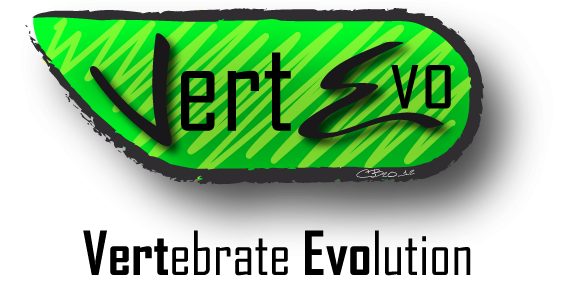Fossils, genes and the evolution of the vertebral column in dinosaurs & co.
 Birds and crocodylians are the only living members of Archosauria and therefore represent a crucial group to be studied in order to further our understanding of dinosaurs. The book edited by Woodward and Farlow (2023) Ruling reptiles. Crocodylian Biology and Archosaur Paleobiology offers a collection of chapters on various topics including osteology, histology, evolutionary developmental biology, functional morphology, ichnology and many more. Amongst others, the chapter by Araújo R and Fernandez V (2023) provides a three-dimensional developmental anatomical atlas of the skeleton in the Nile crocodile (Crocodylus niloticus). The chapter by Woodward HN et al. (2023) reports on alligator allometry, osteohistological correlates and paleobiological applications.
Birds and crocodylians are the only living members of Archosauria and therefore represent a crucial group to be studied in order to further our understanding of dinosaurs. The book edited by Woodward and Farlow (2023) Ruling reptiles. Crocodylian Biology and Archosaur Paleobiology offers a collection of chapters on various topics including osteology, histology, evolutionary developmental biology, functional morphology, ichnology and many more. Amongst others, the chapter by Araújo R and Fernandez V (2023) provides a three-dimensional developmental anatomical atlas of the skeleton in the Nile crocodile (Crocodylus niloticus). The chapter by Woodward HN et al. (2023) reports on alligator allometry, osteohistological correlates and paleobiological applications.
Direct evidence for developmental processes in extinct animals, such as dinosaurs, is rare because the fragile bones of embryos have a smaller chance of becoming fossilized than the massive bones of adults. Thus, developmental paleontology is mostly restricted to postnatal and late stages of growth. In addition to the scarcity of fossil embryonic material, there is also the need for specialized imaging techniques and analystical methods to access the preserved information. In the chapter by Böhmer C (2023), Prof. Dr. Böhmer reports on an alternative and complementary approach to close the gap between fossils and embryology by inferring the roles of developmental processes in the evolution of extinct animals based on living relatives. The review highlights the potential of using crocodilian biology to unravel the genetic and developmental mechanisms underlying phenotypic diversity using the example of the vertebral column in living and extinct archosaurs. The synergy of molecular and morphological tools has been successfully used to explain and understand how elongated necks may have evolved in non-avian dinosaurs (Böhmer et al. 2015a). The case of crocodile vertebral development and its implications for dinosaur neck evolution will hopefully stimulate future research integrating genes, morphology, and fossils.
References:
Böhmer C, Rauhut OWM and Wörheide G (2015). Correlation between Hox code and vertebral morphology in archosaurs. Proceedings of the Royal Society B 20150077. DOI: 10.1098/rspb.2015.0077 [PDF]
Böhmer C (2023) Bridging the gap between fossils and genes in archosaurs: Molecular backbone of dinosaur necks. pp 100-122 in Woodward HN & Farlow JO (2023) Ruling reptiles. Crocodylian Biology and Archosaur Paleobiology. Indiana University Press.
Woodward and Farlow (2023) Ruling reptiles. Crocodylian Biology and Archosaur Paleobiology




Neueste Kommentare